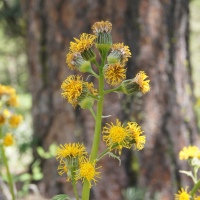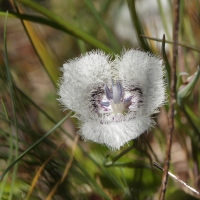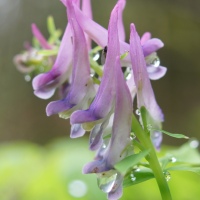Nootka Rose (Rosa nutkana)

Willow Creek Natural Area, Eugene, OR, 5/2016.
For Valentine’s Day, we’re posting our first of several native roses from our region, this one is named after the Nootka Sound on Vancouver Island, where the plant was first observed. Wild roses, with just a few petals and unkempt appearance, are a much humbler species than the grandiflora long stem roses of modern mythical heart connections. Although wild, native roses do still retain their fragrance & thorns. Rose hips, rich in Vitamin C, are a rich trail snack that native americans used as a “breath freshener & survival forage” per Daniel Matthews.
In our research on native roses, we’ve found some distinctions between the four typical species. The Nootka’s flowers at 3″ are almost twice as big as the others and are nearly always found near sea level — we’ve found them in the Willamette Valley and in the Columbia Gorge. And though they form thickets they are unique in having typically only one flower to a stem. Their size rivals the non-native Rugosa we often see, which is much more fragrant with waxy leaves. At higher elevations, the native species often split West and East of the Cascades. The Pearhip Rose (Woodsii) is eastside, while the Wood Rose (gymnocarpa) and the Clustered Wild Rose (pisocarpa) are more frequent on the westside where we typically hike. The common Wood Rose has the smallest flowers, forms a looser shrub than the others, and if you are hiking in the fall and notice rose hips without any fuzz, you’ve discovered why its alternate name is the Baldhip rose.
Happy Valentine’s Day from NW Wildflowers!!

Wind Mountain Trail, Columbia River Gorge, WA, 5/2015.









I do like the simplicity and delicacy of these wild roses far better than the cultivated varieties.
February 14, 2019 at 7:59 pm